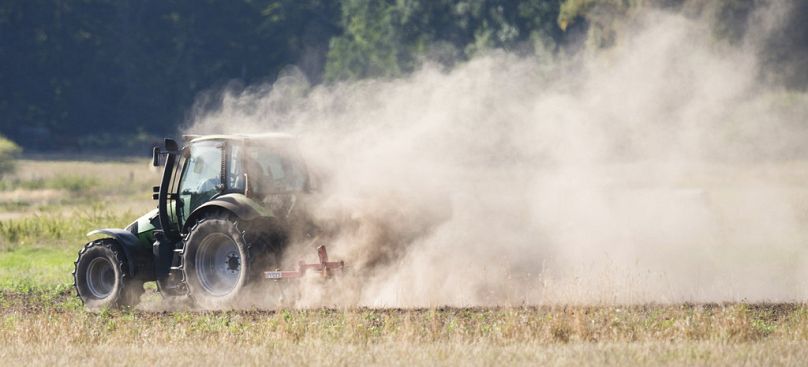Euronews Business breaks down the latest Eurostat data on agricultural price fluctuations country by country.
Preliminary data on EU agricultural prices has indicated a halt in the rise in 2023, with an increase of 2%, slowing from a jump of 24% in 2022, according to Eurostat.
Conversely, the average price of inputs, encompassing goods and services consumed in agriculture, saw a notable 5% decrease.
The moderate overall rise in agricultural goods prices varies among specific products. Olive oil, potatoes (including seed potatoes), pigs, and eggs witnessed a significant price jump of 54%, 23%, 22%, and 20%, respectively.
A severe drought in 2023 affected crop production, particularly potatoes, and led to price increases in 24 EU countries.
Germany experienced the highest rise at 49%, followed by Slovakia (48%) and Croatia (44%). However, Belgium (-18%), Cyprus (-14%), and Austria (-4%) saw prices for potatoes fall.
In contrast, cereals, including wheat, barley, maize, rye, oats, and other types, recorded a substantial 26% decrease.
The average price of fertilisers and soil improvers registered a 23% decline, while energy lubricants saw a 12% decrease. Prices of fertilisers were lower than in 2022 in 22 EU countries (out of 26 with available data). Prices fell in Luxembourg (-46%), Sweden (-41%), and Finland (-39%). In contrast, prices were higher in Cyprus (14%), Malta (9%), Greece (6%), and Romania (3%).
Conversely, the average prices of plant protection products, pesticides, seeds, and planting stock all saw a 9% increase.
The cost of raw materials, including seeds and fertilisers, remains one of the primary factors influencing the cost of food.
According to the Food and Agriculture Organisation (FAO), the global food price index for 2023 ended about 10% below 2022 levels.












